Acropolis
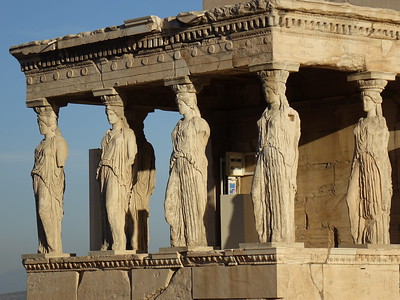
The Acropolis, Athens holds a group of monuments that have been influential from Antiquity to Neo-Classicism.
The striking complex of monuments is situated on a hill that dominates Athens. Starting as a fortress, it gradually became a cult site for the city goddess Athena. A building programme in the 5th century BCE resulted in the architectural masterpieces of the Parthenon, the Propylaia, the Temple of Athena Nike and the Erechtheion.
Community Perspective: Classical Greece at its best. The lower slopes and the New Acropolis Museum are outside the core zone, but well worth additions to a visit.
Archaeological Site of Delphi
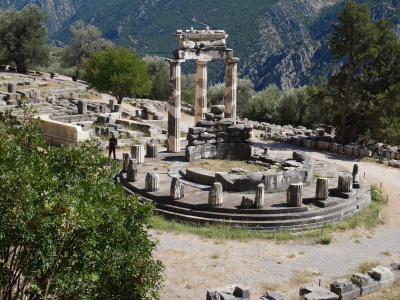
The Archaeological Site of Delphi comprises the remains of a sanctuary in a magnificent natural setting that was the "navel of the universe" and had a huge impact on the ancient world.
Delphi reached its height in the 4th century BCE, when large numbers of pilgrims came to ask advice of its oracle who was believed to be Apollo's mouthpiece. In return, the pilgrims from all across Greece and abroad brought votive gifts to the temple. Delphi’s Theatre and Stadium, where the Pythian Games took place every four years, were also important attractions.
Community Perspective: "Its remaining monuments don´t quite reflect its extreme significance in ancient Greece" - Squiffy thinks it could have done with more reconstruction, while Astraftis begs to differ. Don't miss the theatre and the stadium high above the photogenic Temple of Apollo, and the museum is recommended too. The site can be reached by bus from Athens, but it is better to stay overnight nearby.
Bahla Fort
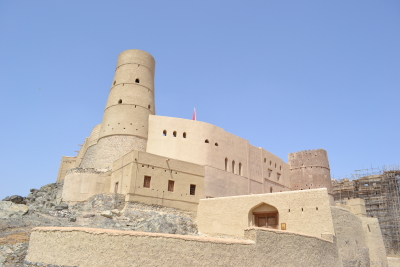
Bahla Fort comprises the ruins of a typical Omani military fortress and oasis settlement from the medieval Islamic period.
The fort was built by the local Banu Nebhan tribe that ruled between the mid-12th and 15th centuries, its enormous size demonstrating their power. Its walls and towers were built in adobe, on a sandstone base. The walls enclose a mud brick settlement with vernacular houses, the Friday mosque, a falaj system and cultivated lands.
Community Perspective: the forts are among the highlights of Oman, but Bahla isn’t its best. There is little explanation and not much to see except for the fortification design. Clyde has provided the most comprehensive review so far.
Blenheim Palace
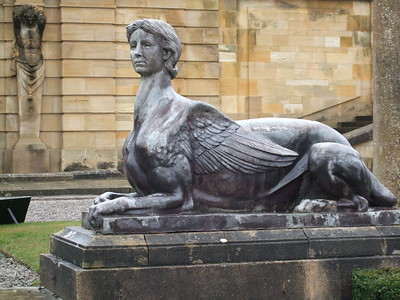
Blenheim Palace is an 18th-century aristocratic residence built in the eclectic style of the English Romantic movement.
The first Duke of Marlborough was given this former royal property by Queen Anne, after his victory over the French at Blenheim in 1704. It was built by the architect John Vanbrugh, who combined baroque, (neo)gothic, and neoclassical elements and had a love of nature. The grounds include formal gardens plus a landscape park designed by Capability Brown.
Community Perspective: Ian has called it “the quintessential English stately home” and in his review, he introduces the legendary quote “palaces bore me rigid”. The gardens however are quite lovely. This WHS has gained recent notoriety as one of the priciest to enter (£31 in 2022), but fortunately, James has shared a way to visit the core zone without paying. Photography inside the Palace is permitted nowadays.
Brasilia
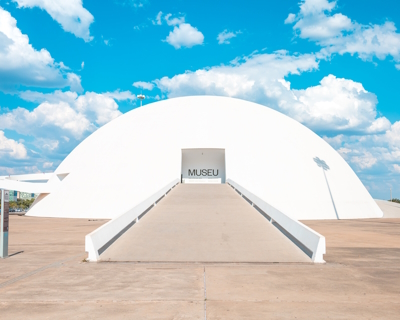
Brasilia is one of the major examples of the 20th century´s modern movement in architecture and urban planning.
The city officially became Brazil´s capital in April 1960. Four years before, President Juscelino Kubitschek commisioned Lucio Costa (urban planner), Oscar Niemeyer (architect) and Burle Marx (landscape architect) to build a new city from scratch. The design is known as the Plano Piloto, in which Brasilia is shaped like an airplane with residential zones and an area with government buildings.
Community Perspective: a “strange” city to some, an “awesome” one to others. As a fan of modernist architecture, Ian is an advocate of the latter opinion. Carlo has provided a 2-day itinerary.
Budapest
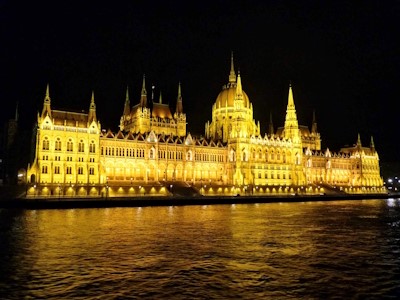
Budapest, including the Banks of the Danube, the Buda Castle Quarter and Andrássy Avenue, holds a number of influential constructions from the Middle Ages to the late 19th century.
The capital city of the former Kingdom of Hungary and the Austro-Hungarian Empire absorbed a series of European artistic, architectural and technological influences. This can be seen in the medieval Buda Castle, the Parliament at the Banks of the Danube and Andrássy Avenue with the Underground Railway.
Community Perspective: Budapest has so much to offer that you can easily spend several days here. Highlights named by reviewers include the setting at the Danube, the Cathedral of St Stevens, Gellert Bath, Rudas Bath, Liszt Music Academy, and St Matthew Church.
Chaco Culture
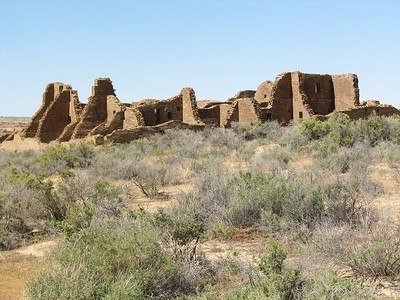
Chaco Culture is an archeological site illustrating the architectural and engineering achievements of the Pre-Columbian Chaco people.
The Chaco were the ancestors of the modern Pueblo peoples. They lived in this harsh environment from the 9th to the 13th centuries and created agricultural communities and a road network. The great houses (public buildings) of Pueblo Bonito, Una Vida, Hungo Pavi and many more were constructed. The site includes Chaco Culture National Historical Park, the associated sites at Aztec Ruins National Monument, and five additional protected archaeological areas.
Community Perspective: Chaco Culture NHP is quite a remote site and accessible by a gravel road only. A visit takes multiple hours and you can even stay overnight (camping, reservation advised). Kyle and Michael report on visits to some of the associated sites such as Aztec Ruins.
Chola Temples
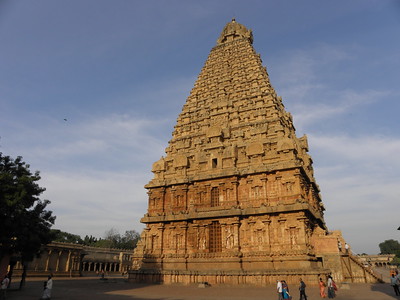
The Great Living Chola Temples represent the development of the architecture of the Chola Empire and the Tamil civilisation in Southern India.
These three granite temples are dedicated to Shiva and are living temples. The Brihadisvara Temple in Thanjavur is the earliest and most representative monument and has influenced the other two (the temples of Gangaikondacholapuram and Darasuram). Their layout differs from other South Indian temples because of their tall and elaborately sculptured Vimanas (sanctuaries), whereas elsewhere the gates are the highest points.
Community Perspective: Most visited the Big Temple in Thanjavur, whose Vimana is exuberant. There’s no entrance fee or limitations for non-Hindus. Only take your shoes off.
City of Bath
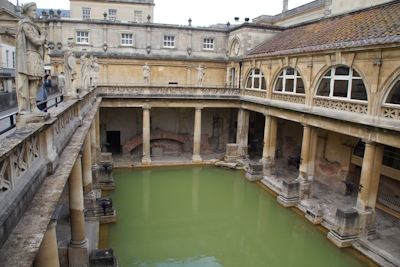
The City of Bath comprises a Roman and Georgian spa destination renowned for its Neo-classical Palladian architecture.
The city, centered around natural hot springs, was founded by the Romans as Aquae Sulis. The remains of their bath complex have been well-preserved. In the 18th century, monumental Neo-classical buildings were added to a new urban design to create a beautiful cityscape and strengthen Bath’s role as a spa city.
Community Perspective: The often-renovated Roman Baths require a high entrance fee (£28 in 2023) and are crowded, but are the highlight. The Georgian features can best be enjoyed when you visit on a sunny day when the warm creamy stone seems to glow.
Dja Faunal Reserve

The Dja Faunal Reserve covers one of the largest and best-protected rainforests in Africa noted for its biodiversity.
The reserve is almost completely surrounded by the Dja River, a contributary to the Congo River. Its dense primary forests are the habitat of over 100 mammal species and more than 320 bird species. Especially notable are its primates, such as the western lowland gorilla, chimpanzee, mandrill, and drill. African grey parrot and Grey-necked Picathartes are among the birds that are found here.
Community Perspective: this site has been unreviewed so far, no wonder since it has no road access and only about 100 people visit overall annually.
Elephanta Caves
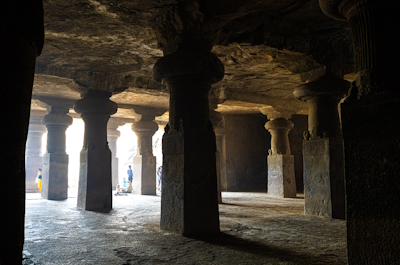
The Elephanta Caves hold great examples of Indian rock-cut art and architecture.
The reliefs and sculptures in the caves have been dated between the 5th and 8th centuries. The Hindu caves are dedicated to the god Shiva. These were regular Hindu places of worship, and during the festival of Shiva continue to be so. The caves are hewn from solid basalt rock. All caves were painted in the past, but only traces remain.
Community Perspective: As it is easily accessible from Mumbai city centre on a 1hr boat ride from the Gateway of India, it’s a nice escape from the city. Cave 1 is the really impressive one. Ignore the scam guides. Frederik’s review is a good place to start as he shares his visiting experience and knowledge of Hinduism.
Frontiers of the Roman Empire

The Frontiers of the Roman Empire comprise significant remains of the Limes Romanus, a border defense or delimiting system of Ancient Rome.
It includes the Upper German-Raetian Limes, Hadrian’s Wall, and Antonine Wall, all built in the 2nd century CE in the northwestern part of the Empire. The Romans constructed military installations (forts, barriers, watchtowers, ditches) and related civilian settlements, linked by roads, to separate their citizens from the “barbarians”.
Community Perspective: The Roman Fort of Saalburg is the most visited part of the German component. The remains of Hadrian’s Wall can be admired on a hike (Ian), by the AD 122 bus, or by some selective exploration (James). A part of the (less well-preserved) Antonine Wall has been covered by Jay and Allan.
Great Wall
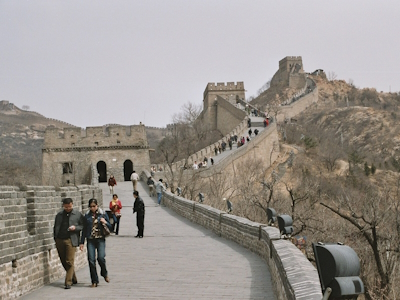
The Great Wall is a masterpiece of construction of ancient China that has also high symbolic value.
The stone and earthen fortifications in northern China were built originally to protect the northern borders of the Chinese Empire against intrusions by various nomadic groups. As it is "virtually impossible" to guarantee the perfect preservation of the whole length of the wall(s), the conservation is focused on the Badaling section, the western starting point at Jiayuguan Pass and the eastern end at Shanhaiguan.
Community Perspective: To escape the tourist crowds, reviewers recommend hiking stretches of the “wild” Wall or seeking out remote, unrestored portions (although these are not part of the core zone, you will feel that you have properly visited). Solivagant saw the ‘official’ start and end points at Shanhaiguan and Jiayuguan.
Gros Morne National Park
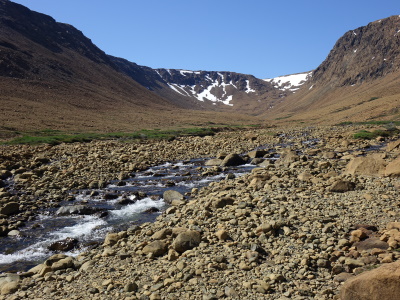
Gros Morne National Park is renowned for its role in geological evolution and its scenic beauty.
The park has textbook examples of the process of plate tectonics. It is one of the rare places on Earth where the deep ocean crust and the rocks of the Earth's mantle have become exposed. Gros Morne also holds many rock formations, glaciers, fjords and waterfalls.
Community Perspective: Prepare to spend at least a few days here, “The park has everything, mountains, waterfalls, fjords, beaches, rugged coastline with sea stacks, heritage communities and wildlife.” Highlights include Western Brook Pond (the boat tour to the fjord), the Tablelands (where the rocks of the exposed mantle can be seen) and the Green Gardens hike (through a tuckamore forest).
Hawaii Volcanoes

Hawaii Volcanoes National Park is an excellent example of island building through volcanic processes.
The park includes Kilauea, the most active volcano in the world, and Mauna Loa, the greatest volcanic mass on Earth and one of the best examples of a shield volcano. The ongoing geological processes make it an important place for scientific study as well.
Community Perspective: for the best experience you would need your trip to coincide with a major volcanic event. Jay was lucky two times and Michael had to watch the lava plumes from a safe distance. The views from the air (by small sightseeing planes) also come recommended, and Kyle shares some other things worth seeing.
Hollókö
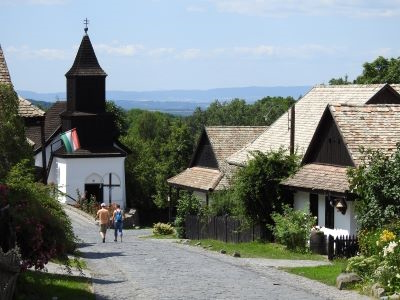
The Old Village of Hollókö and its surroundings is a living example of rural life before the agricultural revolution of the 20th century.
Hollókö is a Palóc ethnographic village, an ethnic minority group in north-east Hungary. The village developed mainly during the 18th and 19th centuries and has preserved its half-timbered architecture. The surroundings include strip-field farming, orchards, vineyards, meadows and woods.
Community Perspective: Solivagant’s review of a visit in 1986 still gives a glimpse of the site’s communist era. Then and now it is much geared toward receiving tourists and it’s almost a museum village. Stanislaw has explained how to visit on public transport.
Imperial Palace
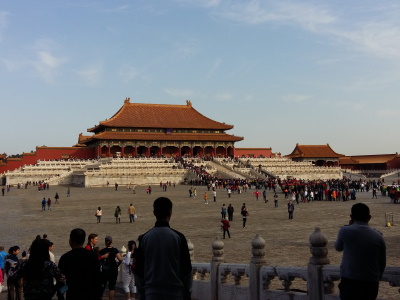
The Imperial Palaces of the Ming and Qing Dynasties in Beijing and Shenyang with their grand palatial architecture represent State power in late feudal China
The Imperial Palace of the Ming Dynasty, commonly known as the Forbidden City, lies in Beijing and has been the residence of the Ming emperors since 1421. It represents the ritual and court culture of that period. The Imperial Palace of the Qing Dynasty was the secondary capital; the palace dates from the 17th century and its plan and architecture show the Manchu culture of this dynasty, including sacrificial places to practice Shamanism.
Community Perspective: The Forbidden City in Beijing stands out for its enormous scale, and takes hours to explore if you stray off the main path. The palace in Shenyang shows the intricate design of Manchu architecture.
Kilimanjaro National Park
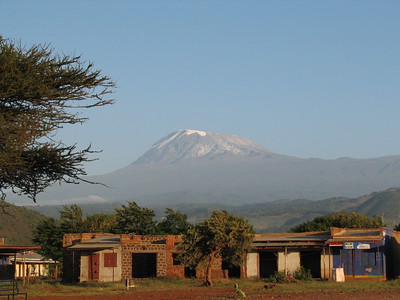
Kilimanjaro National Park protects the highest mountain in Africa (5,895m), which is also one of the largest volcanoes in the world.
Mount Kilimanjaro stands out for its snow-capped peak and glaciers. There are five vegetation zones that cover its various altitudes: montane forest, moorland, upland moor, alpine bogs and alpine desert. The park is rich in mammal species.
Community Perspective: Climbing Kilimanjaro is “possible for anyone who is reasonably fit and does a bit of mental and physical preparation” – and 5 of the reviewers so far did so. However, it is possible to visit the park on a day hike too – see the reviews of Squiffy and Els.
Ksar of Aït Ben Haddou
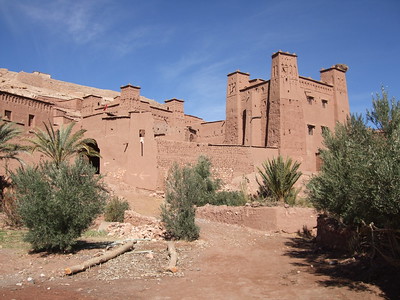
The Ksar of Aït Ben Haddou is a communal housing compound, typical of a type of earthen construction that is traditional to the Maghreb.
The buildings lie in a strategic position against a mountain. They have angle towers and are surrounded by steep defensive walls. The Ksar consists of larger and smaller private houses, but also communal areas like a marketplace and a mosque. All are made from moulded earth and clay brick. The walls and towers are often ornamented with decorative motifs.
Community Perspective: This is a great day trip from Marrakech and a striking sight, also due to its location in the foothills of the High Atlas mountains.
Lübeck
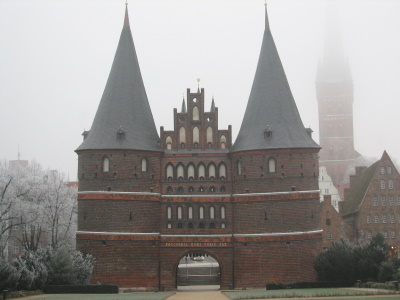
The Hanseatic City of Lübeck represents the heritage of a leading player in the medieval Hanseatic League.
This league of merchant cities held a monopoly over the trade of the Baltic Sea and the North Sea. Lübeck’s town plan shows the strict socio-economic organization of that period. Despite serious damage during World War II, a large number of historic monuments remain such as religious buildings, salt storehouses and patrician residences.
Community Perspective: Some find that Old and New live in harmony here, while others lament the “ugly modern constructions, parked cars, cheap shops and eateries”. It’s essentially “a relatively modern city with a few patches of history still within it”. The Holstentor is its most iconic sight.
Manu National Park
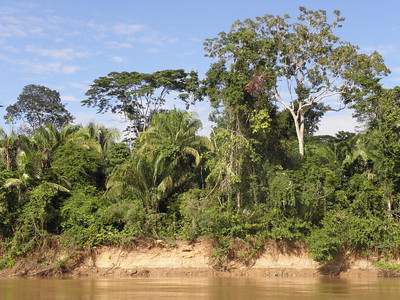
Manú National Park has a biodiversity that rarely can be found in any other place on Earth.
The isolated park comprises the catchment basin of the Manu River and part of that of the Alto Madre de Dios River. It holds an extremely broad range of ecosystems, resulting in high diversity and a high degree of endemism. Virtually all flora and fauna species are present in abundant numbers: more than 15,000 species of plants are found in Manú, up to 250 varieties of trees have been found in a single hectare and the park is home to over 800 species of birds. Furthermore, it’s a refuge for globally threatened mammal species such as Giant Otter, Giant Anteater, Ocelot and Jaguar.
Community Perspective: Philipp has well-explained the options for visiting; be aware that it at least takes a tour of multiple days. If you can afford it, go for a tour into the Reserved Zone, as described by Els. Memorable will be the enormous variety of trees, plants and monkeys.
Mausoleum of the First Qin Emperor
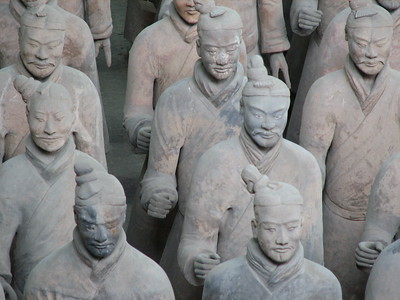
The Mausoleum of the First Qin Emperor is known for its life-size terracotta statues of warriors.
The hyperrealistic sculptures are seen as major works in the history of Chinese sculpture and are valuable for the insight they provide into the social and military history of the period. Qin Shi Huang in 246 BCE arranged for this burial site for himself. The Terracotta Army was to be buried with him to help him rule another empire in the afterlife. The three main pits have uncovered over 8,000 figures of warriors and horses and a large number of exquisite funeral objects.
Community Perspective: “The longer you spend around the warriors the more impressed you become.”
Mexico City and Xochimilco
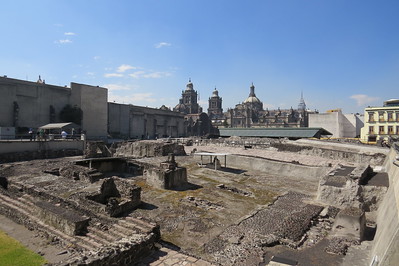
The Historic Centre of Mexico City and Xochimilco represents the historical continuity from the city as Aztec capital to the capital of New Spain.
The area in the Centro Historico includes an Aztec archeological site, Spanish colonial constructions and 19th and 20th century public buildings. Mexico City was built on top of the ruins of an old Aztec capital, Tenochtitlan, of which the Templo Mayor remains. The Spanish added their own colonial churches and public buildings on a checkerboard street plan. At Xochimolco, a network of canals and artificial islands can be found built by the Aztecs.
Community Perspective: There is plenty to see in Mexico City, where the Templo Mayor and the Palacio Bellas Artes are among the highlights. A trip to Xochimilco nowadays is mostly an encounter with “Mexican Kitsch”, although Frédéric and Els found ways to experience the canals of the Aztecs and the floating gardens that are still in use.
Mogao Caves
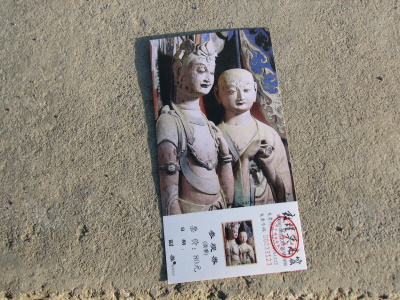
The Mogao Caves comprise a Buddhist rock art sanctuary that flourished along the Silk Road.
The 492 rock-cut cells and sanctuaries are known for the artistic quality of their statues and wall paintings. Because of its strategic position along the Silk Road, the caves attracted many pilgrims and a variety of cultural influences from the 4th until the 14th century.
Community Perspective: The art may be fabulous, but the visitor experience is far from that and you’ll only be allowed to see 4-8 caves as part of a group accompanied by a (often rushing and unhelpful) guide.
Monticello
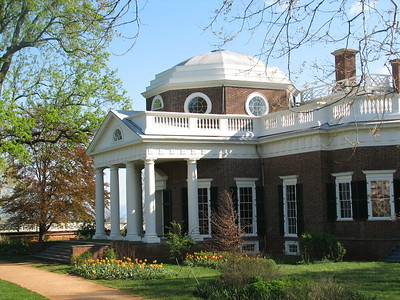
Monticello and the University of Virginia in Charlottesville are outstanding examples of neoclassical architecture.
This plantation house and academic village are two major works designed by Thomas Jefferson (president, writer, and architect). He was inspired by Andrea Palladio's 'Four Books of Architecture' and several study trips to Europe. Monticello, based on a Roman design, was his own villa. The Academical Village of the University of Virginia was based on Jefferson's educational ideals.
Community Perspective: the interior of the house is usually visited on a guided tour (“bearable” as it lasts only 30 minutes and the guides are knowledgeable), but you can explore the other areas on your own. Getting out to the University of Virginia buildings is worth the effort too. Much of the site (and the inscription) is about Jefferson as a person, a dilemma that is addressed in Kyle’s review.
Mount Taishan
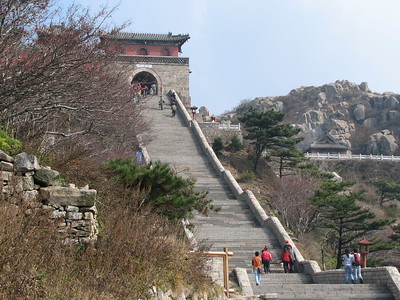
Mount Taishan is an impressive rock mass that has been worshipped for over 3,000 years.
This mountain, covered in pine forests and rocky cliffs, is dotted with man-made structures such as bridges, gateways, pavilions and a flight of 6,660 steps. It was where the Emperor paid homage to Heaven and Earth in ritualized ceremonies. It is also notable for its 1,800 historic stone tablets and inscriptions.
Community Perspective: It takes hours to climb to the top, where the most important monuments are, but there are cable cars as well. Zos did it like a real pilgrim and hiked all the way up during the night.
Nemrut Dag
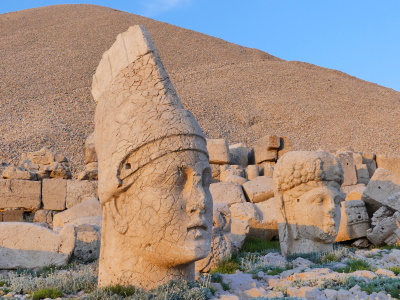
Nemrut Dağ is a mountain shaped to hold the Hellenistic mausoleum of Antiochos.
The funerary mound was built by the late Hellenistic King Antiochos I of Commagene (a kingdom north of Syria and the Euphrates) as a monument to himself. It consists of a number of statues of gods and of Antiochos built on terraces - the heads of the statues have tumbled down over the years and have been reerected on the place where they fell.
Community Perspective: This fantastic, bizarre site is located at the end of a treacherous mountain road. Bergecn and Clyde have written the most comprehensive reviews of a recent visit. And Philipp has proved that it can also be visited in the winter!
Oaxaca and Monte Alban

The Historic Centre of Oaxaca and Archaeological Site of Monte Albán are a 16th-century colonial town and a nearby pre-Columbian ceremonial centre.
Oaxaca is a typical 16th-century Spanish colonial town with a zocalo (central square), a cathedral and a strict grid building pattern. The old Zapotec site of Monte Alban dates from 300-900 when about 25.000 people lived here. Tombs, a field for ballgames and several buildings are still in good shape.
Community Perspective: Oaxaca is a pleasant city (see Clyde’s review for tips on what to see) and Monte Albán has a fine setting on the top of a flattened hill. Solivagant goes into detail about why these two sites were combined into one nomination.
Palenque
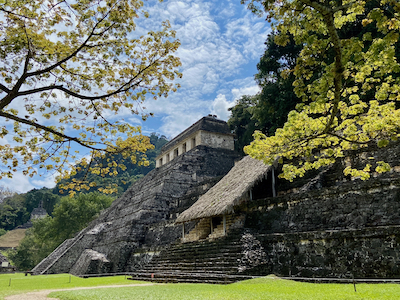
The Pre-Hispanic City and National Park of Palenque is a well-preserved example of Mayan art and architecture of the Classic period.
Palenque was at its height between 500 and 700 CE. Its civic and ceremonial stone buildings stand out for their innovative, refined architectural features. The palaces and temples are decorated with reliefs showing Mayan mythology, writing and calendric systems.
Community Perspective: It’s a bit out of the way, but it’s one of the top Mayan sites which “has probably found the best balance between restoration and jungle setting, protection and letting you climb/explore”. The museum is recommended as well.
Pattadakal
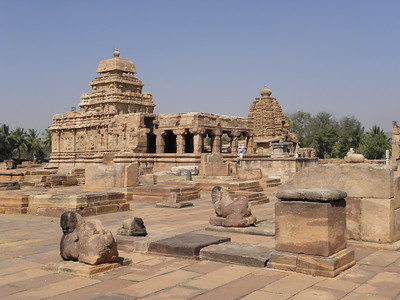
The Group of Monuments at Pattadakal are temples and architectural models that show both Dravidian (South Indian) and Indo-Aryan (North Indian) styles of architecture, and a unique blend of these two.
They were commissioned by the Chalukya Dynasty who ruled part of South India, and Pattadakal was their ceremonial capital. The constructions mainly date from the 7th and 8th centuries. They include 9 Shiva Temples and 1 Jain Temple. Part of the site is still in use as an active centre of worship, mainly at the sacred bull Nandi which is made of black granite and fully intact.
Community Perspective: This is a fairly remote site and it is best to hire a car+driver from Hospet/Hampi for a day to get there. Overall, “a very interesting WHS but an extension with Aihole and Badami will really boost this site's OUV”.
Peking Man Site
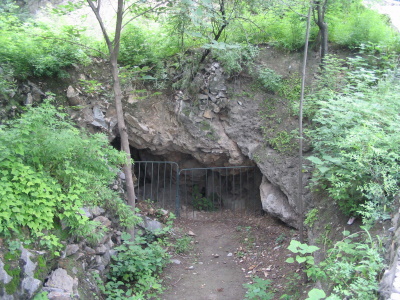
The Peking Man Site at Zhoukoudian is an important finding place of early Asian hominids such as one of the first specimens of Homo erectus, dubbed Peking Man.
The natural limestone caves and adequate water supplies in this area made it suitable for the survival of early humans. The findings show the process of human evolution, with remains of Homo erectus pekinensis, archaic Homo sapiens and Homo sapiens sapiens having been discovered. Stone tools and evidence of fire-making by Peking Man have also been found.
Community Perspective: The only site within the Beijing Hotspot that takes you off the beaten path, although it is reachable on public transport. It comprises a number of (original) caves in the woods plus an interesting museum.
Piazza del Duomo (Pisa)

The Piazza del Duomo, Pisa, is a square that contains four artistically important medieval monuments.
The cluster of religious monuments was constructed between the 11th and 14th centuries, when the Tuscan town of Pisa had a fleet that reigned the Mediterranean Sea. The exteriors of the buildings in the Pisan Romanesque style show an interplay of white marble and polychrome motifs, while their interiors hold world-renowned art treasures such as frescoes.
Community Perspective: The 'Leaning Tower' is the most famous of the four, but the Cathedral and Baptistery are more stunning. Reviewers are often disappointed by the piazza as it’s such as small area fully geared to tourists. Opinions vary on whether it is worth the considerable fee (20 EUR, Nov 2023) to climb the Tower.
Potosi
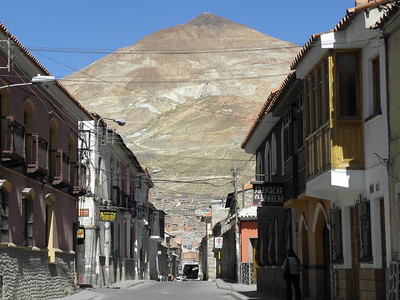
The City of Potosí comprises an urban and industrial landscape shaped by one of the major silver mines of modern times.
Dating from the 16th century and still in use, the site shows the whole production chain (including dams, smelters and ore-grinding mills) and its social context in the colonial city center. Its architecture and arts, using a baroque style incorporating Indian influences, have been influential across the Central Andes. It delivered so much silver to Spain that it resulted in major economic change.
Community Perspective: La Casa de la Moneda (the former Mint) is now the main attraction in the city. Our reviewers have mixed opinions on taking an underground tour of Cerro Rico mine, arguments pro are given by Michael Anak Kenyalang and some of those against by Timonator. Potosí can best be visited as a day trip from Sucre, as the combination of dust, dirt and altitude make it a not very pleasant place to stay.
Puebla
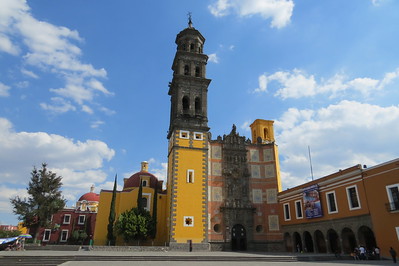
The Historic Centre of Puebla is one of the oldest colonial cities in the continent and among the best-preserved in Mexico.
The city of Puebla was the first city in central Mexico founded by the Spanish conquerors that was not built upon the ruins of a conquered Amerindian settlement. It held a strategic location halfway between the port of Veracruz and Mexico City. The original checkerboard street plan holds many fine buildings in the local Baroque style and houses whose walls are covered with coloured tiles.
Community Perspective: It’s a huge city nowadays, and particularly notable for its food. Architectural highlights include the Rosary Chapel in the Santo Domingo church, the façade of the San Francisco church, the Cathedral and the random colourful buildings.
Seville

The Cathedral, Alcazar and Archivo de Indias in Seville are testimony to the civilization of the Almohads and to that of Christian Andalusia.
The buildings are also directly connected with the discovery of the New World by Christopher Columbus - his tomb lies in the Cathedral, and the Archivio the Indias houses an important collection of documents from that period. The Cathedral of Seville is the largest Gothic building in Europe. Its Giralda Tower was constructed as a minaret by the Almohads during the 12th century, when a large mosque stood at this site. The Alcazar was used as a palace both by Muslim and Christian rulers of Andalusia.
Community Perspective: The three buildings lie right next to each other in the heart of Seville. Although the Cathedral is impressive for its size, the preference of the reviewers tends to tip towards the Alcazar with its blend of styles.
Sian Ka'an
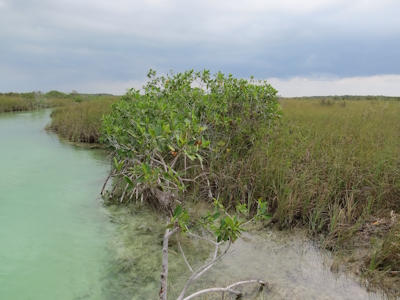
Sian Ka'an is a biosphere reserve in the coastal lowland of Yucatan, with land that is frequently inundated.
Part of the reserve is on land (beaches, dunes, mangroves) and part is in the Caribbean Sea, including a section of the Mesoamerican Barrier Reef and seagrass beds. The landscape features Cenotes (water-filled sinkholes) and Petenes (tree islands) along underground freshwater systems. Five species of cat are found in the reserve, including the jaguar and puma, as well as a wide range of bird species.
Community Perspective: It lies fairly close to the coastal resort of Tulum, from where a terrible road to Punta Allen brings you to the entrance of the reserve (as described by Randi, who also stayed overnight). An easier choice is to hike the boardwalk to the archaeological site of Mujil, or try to find a boat (all are noisy) that will take you out to the sea.
Sundarbans National Park
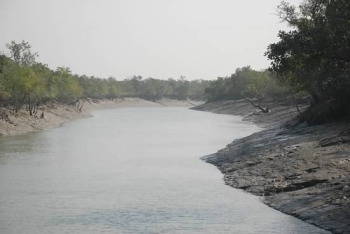
Sundarbans National Park protects the Indian part of the Sundarbans delta, the largest mangrove forest in the world.
The mangrove system is rich in both flora and fauna species. Tiger, spotted deer, dolphins, turtles and the king cobra are among its inhabitants. The area comprises both forests and wetlands, including tidal waterways, mudflats and small islands.
Community Perspective: Solivagant has described the ways to “visit” this site, although the core zone is strictly off-limits.
Teotihuacan
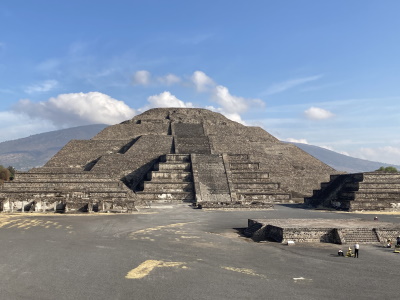
The Pre-Hispanic City of Teotihuacan comprises the ruins of one of the first great classic Mesoamerican civilizations.
The city was an important ceremonial center and had about 125,000 inhabitants in its heyday around 500 CE. It is characterized by the enormous size of its monuments, such as the Pyramids of the Sun and the Moon (71 and 43 meters high respectively). All in Teotihuacan is centered around the Avenue of the Dead, the long and wide road that connects La Ciudadela with the Moon Pyramid.
Community Perspective: A favourite site of many (“the sheer size of the remaining repetitive structures of this WHS is really mind-boggling”) and the no1. day trip from Mexico City. The on-site information is really bad so do your homework. The Temple of the Feathered Serpent has the best decorations. To get away from the crowds, have a look at the Tepantitla Palace. Since Covid, the two main Pyramids cannot be climbed anymore.
Uluru
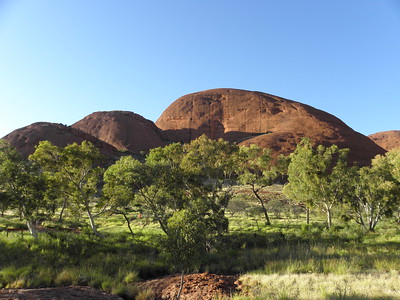
Uluru-Kata Tjuta National Park is a striking physical landscape of two rock formations contrasting sharply with the surrounding sand plains and desert.
The monolith Uluru (Ayers Rock) and the rock domes of Kata Tjuta (Mount Olga) are isolated remnants left after the slow erosion of an original mountain range. It also is an associative landscape via the spiritual relationship of the Aboriginal owners with the land. The area holds numerous sites sacred to the local Anangu people.
Community Perspective: Although popular, this is an expensive destination because you’re confined to the resort town of Yulara and you need a car to get around. Uluru has a magical charm, while Kata Tjuta has good hiking opportunities (Clyde has described a number of them well).
Venice and its Lagoon
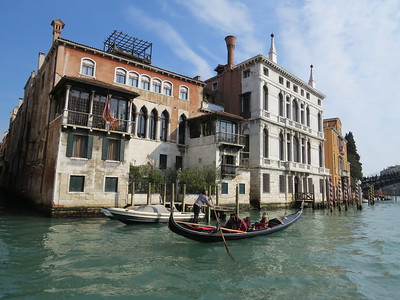
Venice and its Lagoon is a unique achievement of art, architecture and struggle against the elements.
The old historical centre of the city is situated on 118 islands of the Venetian Lagoon, crisscrossed by more than 150 canals and 400 bridges. Most of its monumental heritage dates from the time when the Republic of Venice was a major Mediterranean maritime power. Their influence reached as far as Asia Minor and Egypt, and its great painters inspired art in the whole of Europe.
Community Perspective: “Very, very crowded, the streets are a complete maze, and when there´s acqua alta (and that´s frequently), you wouldn´t want to be there without boots”, but still all reviewers find it captivating and truly wonderful.
Westminster
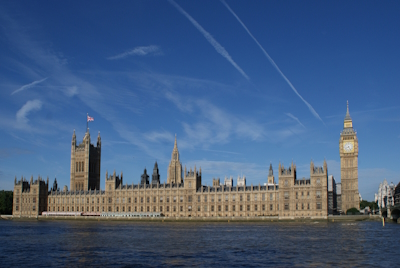
The Palace of Westminster and Westminster Abbey including Saint Margaret's Church are representations of English Gothic art, and symbols of parliamentary monarchy.
The neo-Gothic Westminster Palace is the United Kingdom’s Seat of Government and includes the House of Lords, the House of Commons and the famous Clock Tower Big Ben. Westminster Abbey is a medieval Anglican cathedral that holds the royal mausoleum and is used for coronations. St. Margaret's Church is a small medieval church, part of the Westminster Abbey Complex.
Community Perspective: “Westminster is one of those unmissable (and not to be missed) sites that you just stumble across when you come to London.“ Recommended is to visit the interior of the Parliament building via a guided tour. Westminster Abbey is seen less positively as you may find it “absolutely mobbed with people undeterred by the rather hefty admission fee (£22+)”.
Extended Sites in 1987
Kakadu National Park
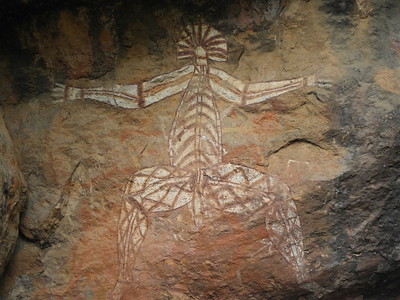
Kakadu National Park comprises wetlands and cliffs, that have been used by Aboriginal cultures for over 50,000 years.
Its rock art reveals insights into hunting and gathering practices, social structure and ritual ceremonies of Indigenous societies. Its variety of ecosystems hold a huge diversity of flora. Large numbers of waterbirds live here, and the wetlands are the breeding habitat of the endangered saltwater crocodile and the pig-nosed turtle.
Community Perspective: The park is prone to flooding in the wet season, but two of the most popular sights are open all year: the rock art at Nourlangie Rock and the Yellow Water Cruise. May-October is the best time to visit, and the usual point of departure is Darwin (there is even a bus service). There’s enough to see to fill 3 days.
Klaus Freisinger Austria - 01-May-05
Even though I was in Kakadu only for two days, I enjoyed it a lot. This place is immensely fascinating and truly deserves its place on the WH list. The wildlife is great - yes, you can easily spot crocodiles -, the flora stunning, and the rock carvings and paintings add another interesting feature as well. I was there during rainy season, you could hardly go anywhere without a boat, and it was raining most of the time, but still this is one of my favorite places in Australia, if not the world. I hope that Kakadu will remain the wild place it is now, since I have heard that UNESCO has reprimanded Australia for allowing mining to continue in the park.
Read On